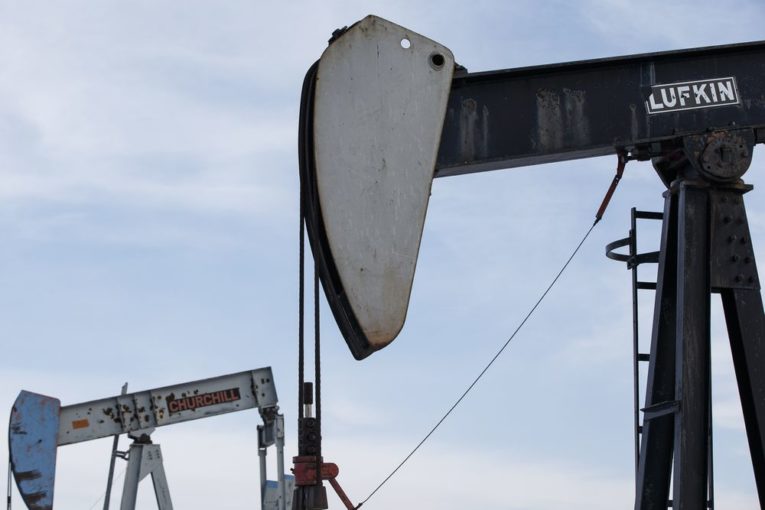
Goodbye, royalty roller-coaster.
Hello, energy Tilt-a-Whirl.
Alberta’s finances are lot like an amusement park ride. When one comes to a stop, another starts right up. They all cost money and leave you feeling queasy.
Finance Minister Joe Ceci introduced his new budget Thursday, one that includes a much-anticipated plan to balance the books after five years.
For the coming fiscal year, however, there’s still $8.8 billion in red ink to be endured, followed by cumulative deficits of $20.6 billion in the following four years.
According to the document, the province will post a small surplus of $700 million in 2023-24, which would be the first time Alberta hasn’t run a deficit since 2014.
By the time a surplus occurs, total debt in the province will approach an eye-popping $96 billion.
Two things are immediately apparent.
Alberta is still overspending, yet doesn’t have enough secure revenue sources in place, leaving us with a structural deficit and little certainty ahead.
And for all of the incessant talk of Alberta getting off the oil and gas royalty roller-coaster, the plan still leans heavily on energy related revenues to make a surplus happen, from increased bitumen production and higher oil prices to new pipelines.
If this is what getting off the roller-coaster looks like, I’ve got some oceanfront property in Saskatchewan to sell the finance minister.
So how will the NDP government balance the books?
A nifty new section in the government document, titled “Path to Balance,” tries to paint a plausible pathway.
Government revenues are projected to expand by 38 per cent over the next six budgets to $66.3 billion, while operating expenses increase by 16 per cent.
Resource revenues are expected to climb from $3.8 billion in the coming budget year to $10.4 billion by 2024.
Oil prices will jump from an average of US$59 a barrel this year — a fairly conservative estimate, given today’s prices — up to $73 a barrel by the end of the plan.
I suppose this could happen, but one would need a crystal ball to accurately predict crude prices more than five years out.
The government is also projecting the discount facing Alberta heavy crude, relative to benchmark U.S. prices, will increase by almost $8 a barrel this fiscal year to average US$22.40 a barrel, reflecting the pipeline constraints squeezing the province.
The differential is expected to ease slightly to $18.40 a barrel after the planned Trans Mountain pipeline expansion and Enbridge’s Line 3 replacement project are built by 2021.
Building new pipelines is foundational to the government’s plan.
But what if they don’t proceed?
The budget says the projects would increase Alberta’s gross domestic product between 1.5 and two per cent by 2023 as oilpatch investment ramps up, while resource revenues are expected to be bolstered by up to $10.5 billion.
If the pipelines aren’t built on time, it could blow a huge hole in Alberta’s budget surplus ship.
“It’s a wing and a prayer — and it’s overly optimistic on pipelines,” quipped Ken Kobly, CEO of the Alberta Chambers of Commerce.
When asked what would happen if the projects aren’t completed, Ceci simply insisted that wouldn’t happen.
“The pipelines will get built. They are federally approved,” he replied. “Our path to balance isn’t predicated solely on Trans Mountain.”
No, not solely.
But it’s folly to pretend these pipelines are a sure thing, given what happened to the ill-fated Northern Gateway project and the B.C. government’s ongoing opposition to the Trans Mountain expansion.
Ben Brunnen, a vice-president with the Canadian Association of Petroleum Producers, welcomes the province’s resolve to get pipelines built. He’s less certain it will trigger the $10-billion lift in capital investment the document predicts.
“Overall, this budget is definitely optimistic from an oil and gas investment perspective,” he said. “It’s probably not overly possible to see these numbers come to fruition in this timeline.”
Now, it is a welcome sign to see the Notley government produce a long-term plan to return to a budget surplus, but there are way too many holes and uncertainties to seriously bank upon it happening.
The lack of details on spending and revenues in the final years of the financial blueprint makes the path to balance a “sketch of a thought — it is not a plan,” said University of Calgary economist Trevor Tombe.
“To be honest, I think the finance minister has lost all – or at least most – of his credibility given what he said two days ago. He made it clear there would be a clear path to balance and that’s not what this is,” Tombe said.
Ouch.
If there are some encouraging signs in the budget, it relates to the overall economy.
The provincial economy is expected to grow by 2.7 per cent this year. For Albertans hunting for a job, the unemployment rate is forecast to drop from 6.8 per cent this year to 4.9 per cent in 2023-24.
With more people working and paycheques getting bigger, personal income tax revenue is projected to rise this year. Corporate tax levels, hammered during the downturn, will increase 18 per cent from last year’s mark, although still below pre-recession levels.
Finally, there’s the debt.
The document shows provincial debt soaring from $43 billion in the outgoing fiscal year to $54 billion in 2018, before ballooning to almost $96 billion by 2023-24.
It’s hard to move past such a gargantuan number without taking a stiff drink.
All in all, the budget is much like ones we’ve seen in the past decade, offering precious little spending restraint and rooted in the hope that higher oil and gas prices will somehow bail us out.
The path to balance seems like another detour inside the amusement park.
And the Alberta Energy Tilt-a-Whirl is about to board.
Chris Varcoe is a Calgary Herald columnist.
You can read more of the news on source
